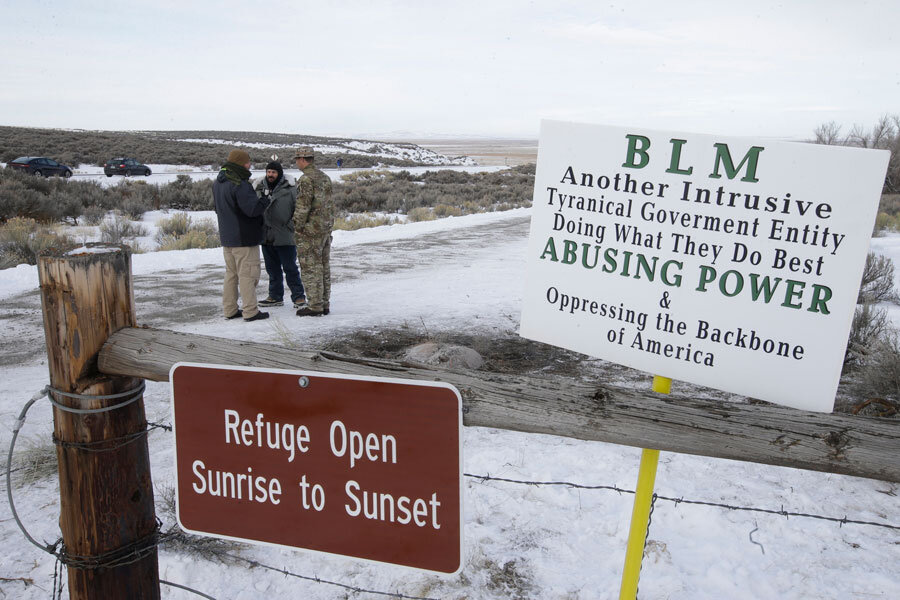Why did those Oregon protesters pick a wildlife refuge to make their stand?
Malheur National Wildlife Refuge near Burns, Oregon, an 188,000-acre sanctuary founded by President Theodore Roosevelt in 1908, is now a subject noted by more than just avid birdwatchers.
Brothers Ammon and Ryan Bundy, along with their armed supporters, have occupied the refuge’s headquarters since Saturday, protesting the prosecution of Dwight Hammond Jr. and his son, Steven Hammond. The pair admitted to lighting fires on federal land in 2001 and 2006 to protect their property from wildfires, but government officials say the Hammonds used arson to cover up illegal poaching activity.
While the Hammonds claim no connection or cooperation with the Bundys, the brother’s armed anti-government group is using the Malheur National Wildlife Refuge to protest the Hammonds’ extended prison terms and what they see as larger Constitutional abuse by the federal government.
“This refuge – it has been destructive to the people of the county and the people of the area,” Ammon Bundy told CNN. “They are continuing to expand the refuge at the expense of the ranchers and miners.”
One hundred and seven years ago, President Roosevelt set aside unclaimed government lands “as a preserve and breeding ground for native birds” who were being slaughtered in the thousands by plume hunters. There were almost 24,000 visitors to Malheur in 2014.
The US Fish and Wildlife Service has closed the refuge to both visitors and employees until further notice.
“It is kind of ironic that they chose Malheur as the place to hold their stand,” Bob Sallinger, conservation director at the Audubon Society of Portland, tells The Christian Science Monitor in a phone interview Tuesday. “It is an example of a place where some important collaborative work is going on.” Sallinger references a 2013 report by Malheur that drafted a long-range mission for the refuge using input from ranchers and environmentalists alike.
“It would be really sad if the result of this occupation resulted in the perception that this is a flash point for conflict, when really it has been a place where people have been working together,” Sallinger tells The Monitor. “It would be a really unfortunate result.”
In contrast, the Bundys see the wildlife refuge as a crystallized example of invasive federal power misaligned with Constitutional rights.
Ammon Bundy told OregonLive he considers Malheur “the tool to do all the tyranny that has been placed upon the Hammonds.” The brothers estimate that Malheur has displaced 100 independent ranches since the early 1900s.
“We are using the wildlife refuge as a place for individuals across the United States to come and assist in helping the people of Harney County claim back their lands and resources,” Ammon told CNN.
Ryan Bundy told The Associated Press on Sunday that he hopes their standoff in Oregon will reverberate throughout the country, encouraging others to seize control of federally managed lands.
“The best possible outcome is that the ranchers that have been kicked out of the area, then they will come back and reclaim their land, and the wildlife refuge will be shut down forever and the federal government will relinquish such control,” Ryan told OregonLive.
But Sallinger says the land didn't originally belong to ranchers.
“When the militia talks about giving [the land] back to original owners, they were not ranchers. They were tribes,” he explains. “If they are really interested in returning [the land] to the original owners, it would be the Paiute tribe.”
And Malheur enthusiasts say the Bundys and their sympathizers are a minority.
“Obviously the community hasn’t received them well, and they haven’t endorsed their actions,” says Salligner. “[Malheur] is one of the crown jewels of the National Wildlife Refuge System and belongs to all Americans… The occupiers are serving nobody’s interests except their own.”







